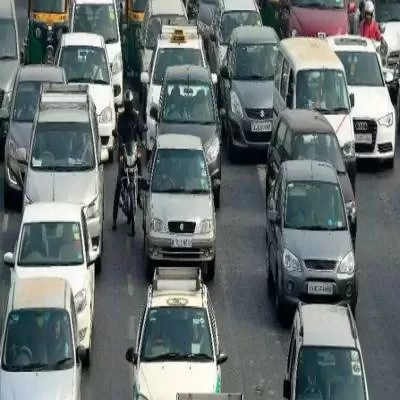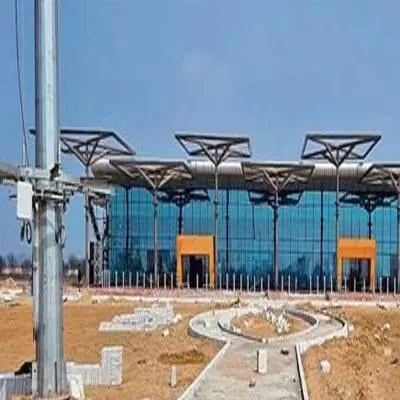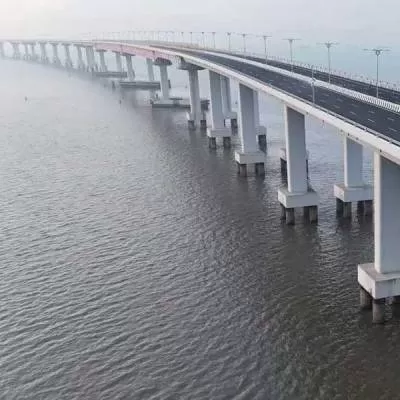- Home
- Infrastructure Transport
- ROADS & HIGHWAYS
- Affordable housing steals the show in 2017
Affordable housing steals the show in 2017
In India, while the population is growing at more than 2.1 per cent every year and may touch 1.51 billion by 2030, growth in housing has been unable to keep the same pace. The Central and States governments are now contemplating many ways and means to provide access to housing for all. Affordable housing will not only fill the housing gap but be the next major economic growth driver by creating more than 2 million jobs during the period till 2022.
To fill the massive gap of affordable housing in India, the government has come up with a spate of many initiatives:
- To encourage the PPP (public private partnerships) module which can amplify affordable housing, the Union Budget 2016-17 announced that developers would be exempt from paying tax on profits in this segment for five years starting 2016.
- The government has increased the time limit to complete affordable housing projects from three to five years. Now, developers will have more time to complete affordable projects.
- The Central Government has raised the budget allocation under Pradhan Mantri Awaas Yojana from Rs 15,000 crore in 2016-17 to Rs 23,000 crore in 2017-18.
- The National Housing Bank, which is a subsidiary of RBI, has announced that it will refinance individual housing loans worth Rs 20,000 crore in 2017-18.
- Affordable housing was given the vital infrastructure status in the union Budget 2017-18. Now, developers will have diverse and cheaper sources of funding, including external commercial borrowings (ECBs).
Financial support and subsidies
To promote affordable housing, the government has announced several financial schemes to make housing loans in this segment cheaper:
- A 6.5 per cent subsidy on interest on housing loans up to Rs 6 lakh can be availed for 15 years.
- Government assistance of Rs 1.5 lakh is extended for each beneficiary under EWS and LIG.
- A 4 per cent and 3 per cent subsidy on interest for loan amounts of Rs 9 lakh and Rs 12 lakh respectively.
- The government is mulling the waiving stamp duty charges and reducing their impact.
- The middle-income group (MIG) of buyers with annual incomes above Rs 6 lakh to Rs 18 lakh is also included in the interest subsidy.
Affordable housing price segment dominated residential supply in H1 2017
The affordable price segment dominated the residential units supply in H1 2017. The recent new launches trend shows that demand for affordable housing with ticket sizes in the range from Rs 5 lakh to Rs 40 lakh is continuously growing. During the first half of 2017, the top cities (Bengaluru, Chennai, Hyderabad, Mumbai, Delhi-NCR, Pune and Kolkata) recorded more than 60 per cent of total residential units supply in the affordable segment.
The majority of projects in the affordable housing segment were launched in the peripheral boundaries of the top cities, largely due to non-availability of contiguous land parcels for large-scale mass housing developments and skyrocketing property prices in the central locations of our cities.
In H1 2017, the share of the affordable housing segment in new launch supply increased by 16 per cent over the seconnd half of 2016. On the other hand, the mid and luxury segments witnessed a decrease of 4 per cent and 9 per cent percent respectively in the same duration.
About the Author:
Anuj Puri is Chairman of Anarock Property Consultants.
After recognising a massive gap of housing in India, the Union Government had announced 'Housing for All' by 2022 in July 2015 to achieve the staggering target of bridging a gap of more 1.9 crore houses. 96 per cent out of these are required for the lower income groups (LIG) and economically weaker sections (EWS) groups. In India, while the population is growing at more than 2.1 per cent every year and may touch 1.51 billion by 2030, growth in housing has been unable to keep the same pace. The Central and States governments are now contemplating many ways and means to provide access to housing for all. Affordable housing will not only fill the housing gap but be the next major economic growth driver by creating more than 2 million jobs during the period till 2022. To fill the massive gap of affordable housing in India, the government has come up with a spate of many initiatives: To encourage the PPP (public private partnerships) module which can amplify affordable housing, the Union Budget 2016-17 announced that developers would be exempt from paying tax on profits in this segment for five years starting 2016. The government has increased the time limit to complete affordable housing projects from three to five years. Now, developers will have more time to complete affordable projects. The Central Government has raised the budget allocation under Pradhan Mantri Awaas Yojana from Rs 15,000 crore in 2016-17 to Rs 23,000 crore in 2017-18. The National Housing Bank, which is a subsidiary of RBI, has announced that it will refinance individual housing loans worth Rs 20,000 crore in 2017-18. Affordable housing was given the vital infrastructure status in the union Budget 2017-18. Now, developers will have diverse and cheaper sources of funding, including external commercial borrowings (ECBs). Financial support and subsidies To promote affordable housing, the government has announced several financial schemes to make housing loans in this segment cheaper: A 6.5 per cent subsidy on interest on housing loans up to Rs 6 lakh can be availed for 15 years. Government assistance of Rs 1.5 lakh is extended for each beneficiary under EWS and LIG. A 4 per cent and 3 per cent subsidy on interest for loan amounts of Rs 9 lakh and Rs 12 lakh respectively. The government is mulling the waiving stamp duty charges and reducing their impact. The middle-income group (MIG) of buyers with annual incomes above Rs 6 lakh to Rs 18 lakh is also included in the interest subsidy. Affordable housing price segment dominated residential supply in H1 2017 The affordable price segment dominated the residential units supply in H1 2017. The recent new launches trend shows that demand for affordable housing with ticket sizes in the range from Rs 5 lakh to Rs 40 lakh is continuously growing. During the first half of 2017, the top cities (Bengaluru, Chennai, Hyderabad, Mumbai, Delhi-NCR, Pune and Kolkata) recorded more than 60 per cent of total residential units supply in the affordable segment. The majority of projects in the affordable housing segment were launched in the peripheral boundaries of the top cities, largely due to non-availability of contiguous land parcels for large-scale mass housing developments and skyrocketing property prices in the central locations of our cities. In H1 2017, the share of the affordable housing segment in new launch supply increased by 16 per cent over the seconnd half of 2016. On the other hand, the mid and luxury segments witnessed a decrease of 4 per cent and 9 per cent percent respectively in the same duration. About the Author: Anuj Puri is Chairman of Anarock Property Consultants.






















